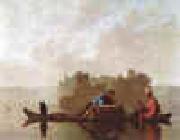 |
George Caleb Bingham -- Click Here
|
|
1811-1879
George Caleb Bingham Gallery
George Caleb Bingham (March 20, 1811 ?C July 7, 1879) was an American artist, whose work depicted his view of American life in the frontier lands along the Missouri River. Left to languish in obscurity, Bingham's work was rediscovered in the 1930s and he is now widely considered one of the greatest American painters of the 1800s.
Born in Augusta County, Virginia, Bingham was the second of seven children born to Henry Vest Bingham and Mary Amend. Upon their marriage, Matthias Amend, Mary's father, gave ownership to the family mill, 1,180 acres of land and several slaves to Henry with the agreement that Matthias could live with the family the rest of his life. Henry offered the land and mill as surety for a friend's debt and, when the friend died in 1818, all was lost. George's family soon moved to Franklin, Missouri "where the land was said to be bountiful, fertile and cheap."
Bingham was a self-taught artist. His sole childhood exposure to the field was as a nine-year-old boy, when famed American portraitist Chester Harding visited Franklin looking for business, having recently sketched Daniel Boone in Warren County, Missouri. George assisted Harding during his brief stay, an experience that left a powerful impression.
In 1823, Bingham's father, now judge of Howard County Court, died of malaria on December 26 at the age of thirty-eight. To keep the family going, Mary Bingham opened a school for girls and George, then twelve, worked as school janitor to help keep the family afloat. At age sixteen, Bingham apprenticed with cabinet maker Jesse Green. After Green moved, he apprenticed with another cabinet maker, Justinian Williams. Both tradesmen were Methodist ministers and, while under their tutelage, Bingham studied religious texts, preached at camp meetings and thought about becoming a minister himself. Bingham also considered becoming a lawyer.
However, by age nineteen, Bigham was painting portraits for $20.00 apiece, often completing the works in a single day. He drummed up work in both Franklin and Arrow Rock and, while his painting abilities were still developing, succeeded in impressing his patrons with his strong draftsmanship and ability to capture the likeness of his subject. Soon Bingham attempted to travel to St. Louis to ply his trade but contracted measles, which left him weak and permanently bald.
In 1836, Bingham married Sarah Elizabeth Hutchison, who bore him three children over the subsequent twelve years before dying at the age of twenty-nine. George married twice more, first to Eliza Thomas, who died in a mental institution in 1876, and then to Martha Lykins, who lived until 1890. George's mother, Mary, died in 1851.
By 1838, Bingham was already beginning to make a name for himself as a portrait artist in St. Louis, his studio visited by several prominent local citizens and statesmen, including the lawyer James S. Rollins who was to become a life-long friend. To further his education, George spent three months in Philadelphia, Pennsylvania before continuing on to New York City to visit the National Academy of Design exhibition.
Bingham was elected to the Missouri General Assembly in 1848.
From 1856 to 1859, Bingham studied art with the members of the D??sseldorf School in D??sseldorf, Germany. Critics claim that this caused him to abandon the rustic American style in his art. Upon his return, he began painting less, turning to politics in the post-Civil War years and serving as state treasurer and adjutant general. He was also president of the Board of Police Commissioners for Kansas City, Missouri in 1874, appointing the first chief of police there . Toward the end of his life he was a professor of art at the University of Missouri in Columbia, Missouri. |
|
|
|
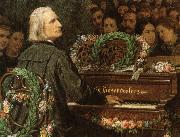 |
george bernard shaw -- Click Here
|
|
Born: 26 July 1856
Birthplace: Dublin, Ireland
Died: 2 November 1950 (natural causes)
Best Known As: The author of Pygmalion |
|
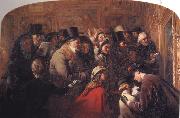 |
George Bernard O Neill -- Click Here
|
|
(1828-1917). Irish genre painter |
|
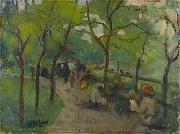 |
George Benjamin Luks -- Click Here
|
|
(August 13, 1867-October 29, 1933) was an American realist artist and illustrator. His vigorously painted genre paintings of urban subjects are examples of the Ashcan school in American art.
Luks was born in Williamsport, Pennsylvania, to Central European immigrants. His father was a physician and his mother was an amateur painter and musician.The Luks family (George, his parents and five siblings) eventually moved to Pottsville, in Southern Pennsylvania near the coal fields. In this setting, he learned at a young age the importance of compassion by watching how his parents helped the coal miners' families, and many believe that this is the reason why lower class New Yorkers were often Luks's subject matter. Luks studied at the Pennsylvania Academy of Fine Arts before he traveled though Europe where he attended several art schools. Later he went to Desseldorf where he lived with a distant relative, a retired lion-tamer. He abandoned Desseldorf for the more stimulating spheres of London and Paris. He then returned to Philadelphia in 1893 where he was an illustrator for the Philadelphia Press where he met John Sloan, William Glackens, and Everett Shinn. They would meet at the studio of Robert Henri, an artist who emphasized the depiction of ordinary life, shunning genteel subjects and painting quickly. The group became known as the "Philadelphia Five". In 1896, Luks moved to New York and began his art career there as the premier humorist artist for the New York World. During his time as an illustrator there, he lived with William Glackens. |
|
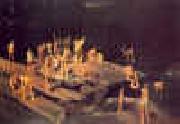 |
George Bellows -- Click Here
|
|
1882-1925
Growing prestige as a painter brought changes in his life and work. Though he continued his earlier themes, Bellows also began to receive portrait commissions, as well as social invitations, from New York's wealthy elite. Additionally, he followed Henri's lead and began to summer in Maine, painting seascapes on Monhegan and Matinicus islands.
At the same time, the always socially conscious Bellows also associated with a group of radical artists and activists called "the Lyrical Left", who tended towards anarchism in their extreme advocacy of individual rights. He taught at the first Modern School in New York City (as did his mentor, Henri), and served on the editorial board of the socialist journal, The Masses, to which he contributed many drawings and prints beginning in 1911. However, he was often at odds with the other contributors because of his belief that artistic freedom should trump any ideological editorial policy. Bellows also notably dissented from this circle in his very public support of U.S. intervention in World War I. In 1918, he created a series of lithographs and paintings that graphically depicted the atrocities committed by Germany during its invasion of Belgium. Notable among these was The Germans Arrive, which was based on an actual account and gruesomely illustrated a German soldier restraining a Belgian teen whose hands had just been severed. However, his work was also highly critical of the domestic censorship and persecution of anti-war dissenters conducted by the U.S. government under the Espionage Act. |
|
|
|
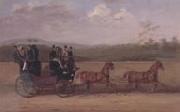 |
George Arnull -- Click Here
|
|
British,active 1825-1838 |
|
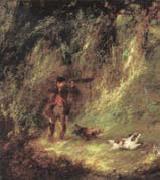 |
George Armfield -- Click Here
|
|
British, born circa 1808-1893
He was born in Wales
His father was a painter, who for some time had a studio at 54, Pall Mall, London and from his father, George Armfield obtained any artistic tuition he may have received.
|
|
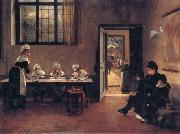 |
George Adolphus Storey -- Click Here
|
|
(1834-1919), Painter
was an English portrait painter, genre painter and illustrator. Storey was born in London, but educated in Paris. When he returned to London, he worked briefly for an architect before studying under J. M. Leigh and J.L. Dulong. Though not a pupil he was also encouraged by William Behnes the sculptor, whose studio he visited. He exhibited at the Royal Academy from 1852 and studied at the Royal Academy schools from 1854. He was strongly incluenced by the Pre-Raphaelites but gave them up under influence of Charles Robert Leslie. Storey worked in North London, establishing a reputation as a genre and portrait painter, and also as an illustrator. He drew elegant pictures of middle class people for love stories and the like. Storey became ARA in 1875 and was a member of the Arts Club from 1874-95. He exhibited at the British Institution, the Royal Society of British Artists in Suffolk Street and the New Watercolour Society. He also published his autobiography in 1899, containing valuable information about the St John's Wood Clique, of which he was a member until he moved to Hampstead. From 1900, he was also the Professor of Perspective at the Royal Academy, and became RA in 1914. |
|
 |
George Gower -- Click Here
|
|
1540-1596
English
George Gower Gallery
Little is known about his early life except that he was a grandson of Sir John Gower of Stettenham, Yorkshire.
His earliest documented works are the two 1573 companion portraits of Sir Thomas Kytson and his wife Lady Kytson, now in the Tate Gallery in London.
Gower painted a self-portrait in 1579 (right) that shows his coat of arms and his artist's tools of his trade. An allegorical device shows a balance with an artist's dividers outweighing the family coat of arms, "a startling claim in England where a painter was still viewed as little more than an artisan."
The Armada portrait of Elizabeth I by George Gower c. 1588Gower was appointed to the position of Serjeant Painter to Queen Elizabeth in 1581. This allowed him to paint most of England??s aristocracy. The post also made him responsible for painted decoration at the royal residences, and on coaches and furniture. Among his works were a fountain (now destroyed) and the astronomical clock, both at Hampton Court Palace. He also inspected portraits of the Queen by other artists prior to their official release.
Gower's best-known work is the version of the Armada Portrait of Elizabeth now at Woburn Abbey, painted to commemorate the 1588 defeat of the Spanish Armada. (A cut down version of this painting in the National Portrait Gallery (United Kingdom) is attributed to Gower; the "Drake" version is by a different hand.) |
|
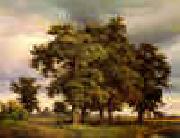 |
Georg-Heinrich Crola -- Click Here
|
|
1804-1879
German
Georg-Heinrich Crola Locations |
|
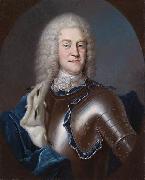 |
Georg Weissmann -- Click Here
|
|
painted Christian Ludwig II, Duke of Mecklenburg-Schwerin in 1731 |
|
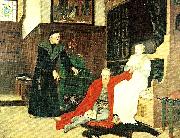 |
georg von rosen -- Click Here
|
|
Johan Georg Otto von Rosen, född 13 februari 1843 i Paris, död 1923 i Stockholm, var en svensk konstnär och greve av ätten von Rosen. Han målade i den akademiska stilen, till stor del historiemåleri och porträtt. Han var professor vid Konstakademien 1880-1908 och dess direktör 1881-1887 samt 1893-1899. Som konstakademiens direktör kom han i stark konflikt med den nya generation av konstnärer som krävde reformer av akademiens utbildning och utställningsverksamhet, de så kallade opponenterna.
Georg von Rosen föddes i Paris 1843 som son till generalkonsuln greve Adolf Eugene von Rosen (kallad "de svenska järnvägarnas fader") och hans hustru Euphrosyne Rizo-Rangabe. Hans första levnadsår förflöt i Paris, varifrån familjen flydde till Sverige under februarirevolutionen 1848. Han studerade 1855-1861 vid Konstakademien i Stockholm. 1862 besökte Rosen världsutställningen i London där han lärde känna belgaren Henri Leys' arbeten, målningar med scener från medeltiden och renässansen målade i ålderdomlig stil. Dessa verk gjorde ett stort intryck på von Rosen. Han skrev själv
Stående hvarje dag i flere timmar, försjunken i åskådandet af dessa om en snart sagdt öfvermänsklig intuition vittnande bilder, som likväl flertalet i den stora hopen med likgiltighet skred förbi, drömde jag mig tillbaka in i en hänsvunnen tid och för mina yttre ögon försvann hela den öfriga utställningen, den omgifvande mängden, ja hela den existerande verlden! Då jag lemnade London, var jag på 14 dagar vorden 300 år äldre.
Rosen uppsökte följande året mästaren i Antwerpen och tillbringade en tid i hans umgänge och i hans atelje. Återkommen till Sverige, inspirerad av mötet, målade han Sten Sture d.ä. intåg i Stockholm. Den medeltida stadsmiljön med det noggranna återgivandet av stenläggningen och den närmast osannolika rikedomen på byggnadsdetaljer känns igen från Leys målningar. von Rosen belönades med kunglig medalj för målningen, och blev hyllad och uppskattad av Oscar II på grund av bildspråket, som i hög grad uttryckte den oscarianska epokens ideal. Samma år begav han sig ut på resa och besökte Egypten, Palestina, Syrien, Osmanska riket, Grekland och Ungern där han studerade måleri. 1866 vistades han ett år i Rom och vistades sedan åter hos Leys fram till dennes död 1869. Därefter studerade han i Menchen under Karl Piloty och reste sedan vidare till Italien innan han återkom till Sverige 1871. Efter hemkomsten målade han Erik XIV och Karin Månsdotter.
1872 blev han ledamot av Konstakademien, 1874 blev han vice professor, 1879 kammarherre och 1880 professor i figurteckning och målning. 1881-1887 samt 1893-1899 var han direktör för Akademins läroverk. 1892-1900 var han även ordförande i Nordiska samfundet till bekämpande av det vetenskapliga djurplågeriet, numera Djurens Rätt.
Han avled 1923 och förblev ogift under hela sitt liv. |
|
|
|
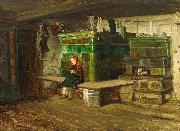 |
Georg Saal -- Click Here
|
|
Germany (1818 -1870 ) - Painter
|
|
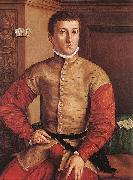 |
Georg Pencz -- Click Here
|
|
Georg Pencz (c. 1500 probably in Westheim near Bad Windsheim/Franconia - 1550 in Liepzig) was a German engraver, painter and printmaker.
Pencz travelled to Nuremberg in 1523 and joined Albrecht Dereres atelier. Like Derer, he visited Italy and was profoundly influenced by Venetian art and it is believed he worked with Marcantonio Raimondi. In 1525, he was imprisoned with the brothers Barthel Beham and Hans Sebald Beham, the so-called "godless painters", for spreading the radical views of Thomas Mentzer by asserting disbelief in baptism, Christ and transubstantiation. The three were pardoned shortly afterwards and became part of the group known as the "Little Masters" because of their tiny, intricate and influential prints.
In Nuremberg, influenced by works he had seen in Italy, Pencz painted a number of trompe l'oeil ceilings in the houses of patrician families; one, for which a drawing survives, showed workmen raising building materials on a hoist, against an open sky, to create the illusion that the room was still under construction.
Around 1539, Pencz briefly returned to Italy, visiting Rome for the first time, returning to Nuremberg in 1540, where he became the city painter and earned his greatest success as a portraitist. As an engraver, he ranks among the best of the German eLittle Masterse. Notable prints include Six Triumphs of Petrarch and Life of Christ (26 plates). The best of his paintings are portraits, such as Portrait of a Young Man , Portrait of Marshal Schirmer and Portrait of Erhard Schwetzer and his wife. |
|
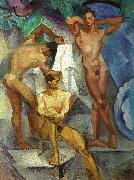 |
georg pauli -- Click Here
|
|
1855-1935, youths bathing, 1914 nationalmuseum |
|
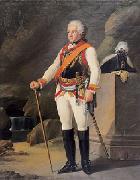 |
Georg Melchior Kraus -- Click Here
|
|
(26 July 1737, Frankfurt am Main - 5 November 1806, Weimar) was a German painter. A student of Johann Heinrich Tischbein, he was also a teacher himself (his pupils included Ferdinand Jagemann), as well as an entrepreneur and friend of Goethe. He was a co-founder of the Ferstliche freie Zeichenschule Weimar with Friedrich Justin Bertuch in 1776.
|
|
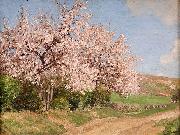 |
Georg Macco -- Click Here
|
|
Germany (1863- 1933 ) - Painter |
|
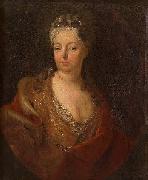 |
Georg Lisiewski -- Click Here
|
|
(1674 -1750 ) - Painter
|
|
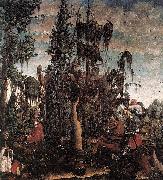 |
Georg Lemberger -- Click Here
|
|
German born 1490- died 1540. Nationality: German. |
|
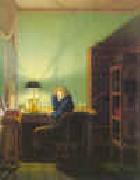 |
Georg Friedrich Kersting -- Click Here
|
|
1785-1847
German
Georg Friedrich Kersting Gallery
Kersting was a friend of Caspar David Friedrich, the leading German Romantic painter; his style was influenced by Friedrich, and he shared that artist's romantic attitude, although in a more subjective manner. The two friends went on a walking tour of the Riesengebirge in 1810. During his many hikes with Friedrich, the two painted numerous sketches and observations from nature. He may have painted the staffage in some of Friedrich's early work??such as Morning in the Riesengebirge (1810?C11), a result of their walking tour.
He was also a friend of the painter Louise Seidler, who described him as "an altogether splendid and comical fellow" and often served as his model. In 1813 Seidler helped Kersting send a number of his works to Johann Wolfgang von Goethe. Goethe was impressed and recommended that the Grand Duke Charles Augustus purchase his work The Embroiderer.
Kersting's most lasting works are his figures in interiors that borrow from seventeenth-century Dutch genre painting. These paintings nevertheless feel contemporary due to the situations depicted and the effect of the artist's personality. The characters are often viewed from the back, as in Friedrich's work, and the scenes provide hints of narrative as the figures engage privately in everyday activities. A number of his works refer to his time in the volunteer corps, the "L??tzow rangers". He drew a full-length self-portrait in 1813, in which he wore the rangers' uniform. The painting On Sentry Duty (1815) depicts three rangers, including the artist Ferdinand Hartmann and the writer Theodor Körner, who fought with Kersting and died in wars against the French. |
|
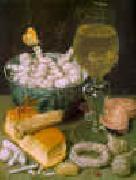 |
Georg Flegel -- Click Here
|
|
1566-1638
Georg Flegel Location
German painter. He was the son of a shoemaker, and not being a Roman Catholic, probably moved to Vienna after 1580, when the Counter-Reformation began to take effect in Olmetz. In Vienna he became the assistant of Lucas van Valckenborch I, whom he subsequently followed to Frankfurt, then an important centre for art dealing and publishing. He filled in staffage in van Valckenborch pictures of the seasons and portraits, inserting fruit, table utensils and flowers as still-life set pieces. His faithful reproduction of flowers and fruit drew on watercolours by Derer, still-life painters from the Netherlands living in Frankfurt, and botanical and zoological illustrations by Joris Hoefnagel, Pieter van der Borcht IV and Carolus Clusius (1525-1609) then being published in Frankfurt. |
|
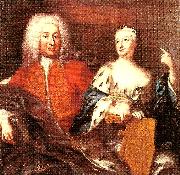 |
georg engelhardt schroder -- Click Here
|
|
Georg Engelhard Schröder, född den 31 maj 1684 i Stockholm, gift 1727 med Anna Brigitta Spöring, död den 17 maj 1750; konstnär, porträtt- och historiemålare.
Georg Engelhard Schröders far, Veit Engelhard, hade omkring år 1670 kommit från N??rnberg och bosatt sig i Stockholm där Georg Engelhard föddes 1684. Han blev tidigt elev hos konstnären och målaren David von Krafft (1655-1724) men lämnade honom 1703 för utlandsstudier.
Under 21 år for Georg Engelhard runt i Europa. Han vistades först en tid i Nordtyskland, innan färden gick vidare till Italien. I Venezia förblev han under fem år och kopierade gamla mästare, sysslade med vedutamåleri och hade kontakt med pastellmålarinnan Rosalba Carriera (1675-1757). I Roma tog han intryck av barockmålarna Carlo Dolci (1616-1686), Carlo Maratta (1625-1713), Francesko Trevisani (1656-1746) m.fl. och tillägnade sig det raska men ytliga framställningssätt, som tillhörde den tidens italienska konst. I Paris samlade han impulser hos den franske målaren Noel Nicolas Coypel (1690-1734). Reminiscenser av den italienska och franska konsten kan man påträffa flerstädes i hans kompositioner. I London stannade han i sju år och tog starka intryck av Godfrey Knellers (1646-1723) och Dahls porträttkonst.
När Daniel von Krafft avled 1724 kallades Georg Engelhard Schröder hem till Sverige och efterträdde i december sin gamle läromästare som kunglig hovkonterfejare. Som sådan uppbar han lön. Konung Fredrik I satte stort värde på sin konterfejare, och lät honom måla otaliga porträtt av sig och sin drottning Ulrika Eleonora. År 1745 utnämndes han till hovintendent. Georg Engelhard anlitades mycket och samlade ihop en betydande förmögenhet. På 1740-talet nåddes Sverige av den nya franska smaken, i främsta rummet via konstnären Gustaf Lundberg (1695-1786), varvid Georg Engelhard kom att skjutas åt sidan. Han representerade i Sveriges 1700-talsmåleri sista skedet i det italienska inflytandet.
Långt ifrån den förnämste, var dock Georg Engelhard en av sin tids mest uppburne målare. Han arbetade inom ett vitt fält: utförde kyrktavlor, allegorier, historiska motiv och porträtt. Hans arbeten har ej sällan någonting vacklande och obestämt, vilket i förening med mycken ojämnhet i utförandet gör många av dem mindre tilltalande för konstkännaren. Han har dock efterlämnat verk, som vittnar om, att han, när han allvarligt uppbjöd sin förmåga, var mäktig till både varm och djup uppfattning samt hade stor skicklighet i färgbehandling och i framställningens enskildheter. |
|
|
|
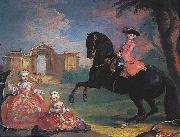 |
Georg Caspar Prenner -- Click Here
|
|
painted The children of Count Vorontsov in 1755 |
|
 |
Georg Anton Rasmussen -- Click Here
|
|
1842-1914
paint Norsk fjordlandskap |
|
|
|
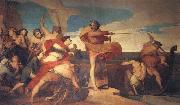 |
Georeg frederic watts,O.M.S,R.A. -- Click Here
|
|
1817-1904 |
|
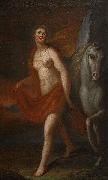 |
geoorg engelhard schroder -- Click Here
|
|
1684+1750
study of a hand . nationalmuseum |
|
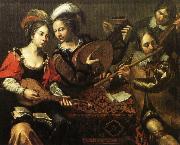 |
geoffrey chaucer -- Click Here
|
|
Born: c. 1340
Birthplace: London, England
Died: 1400
Best Known As: The author of The Canterbury Tales
|
|
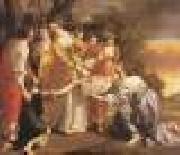 |
GENTILESCHI, Orazio -- Click Here
|
|
Italian Baroque Era Painter, ca.1563-1639
Although he was eight years older than Caravaggio, he is nevertheless regarded as a Caravaggesque artist, so deeply was his mature style affected by his knowledge of the younger painter's art. His response to Caravaggio was intensely poetic, and none of Caravaggio's many gifted followers produced more beautiful pictures. |
|
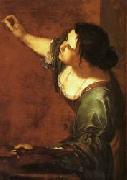 |
GENTILESCHI, Artemisia -- Click Here
|
|
Italian Baroque Era Painter, 1593-1652
Tuscan painter, daughter and pupil of Orazio Gentileschi, b. Rome. She studied under Agostino Tassi, her father's collaborator, who was convicted of raping the teen-age Artemisia in 1612. Over the years, she has been portrayed as a strumpet, a feminist victim or heroine, and an independent woman of her era and her life has been fictionalized in several novels and plays. In purely artistic terms, she achieved renown for her spirited execution and admirable use of chiaroscuro in the style of Caravaggio, and during her life she achieved both success and fame. In 1616 she became the first woman admitted to the Academy of Design in Florence. About 1638 she visited England, where she was in great demand as a portraitist. Among her works are Judith and Holofernes (Uffizi); |
|
 |
Gentile da Fabriano -- Click Here
|
|
Fabriano ca 1370-Rome 1427
Italian painter, one of the outstanding exponents of the elegant international Gothic style. In 1409 he worked in the Doge's Palace, Venice, painting historical frescoes that subsequently perished. In 1422 he was in Florence where he created his most celebrated painting, the resplendent Strozzi altarpiece (Uffizi). Gentile painted in the spirit and the manner of the older school, with glowing color and lavish use of gilt, thereby achieving a jewellike, courtly style. By 1425 he had responded to the new Florentine realism. His refined forms yielded to a sturdier rendering of figures in the Quaratesi altarpiece (panels are now in the Uffizi; Vatican; National Gall., London; and National Gall. of Art, Washington, D.C.). From 1425 until his death he worked in Siena, Orvieto, and Rome. Gentile died in Rome before the completion of the frescoes of St. John the Baptist in the Lateran Basilica. |
|
 |
Gentile da Fabriano -- Click Here
|
|
1370-1427
Italian
Gentile da Fabriano Locations
Gentile da Fabriano, whose real name was Gentile di Niccolo di Giovanni di Massio, came from Fabriano in the Marches. According to tradition, his family was an old one and moderately prosperous. His father, who was said to have been a scholar, mathematician, and astrologer, became an Olivetan monk when a monastery of that order was established in Fabriano in 1397. Gentile brother, Ludovico, was a monk of the same order in Fabriano, and Gentile himself was living in the Olivetan monastery of S. Maria Nuova in Rome at the time of his death. A document of Oct. 14, 1427, speaks of him as dead.
Gentile art indicates that he was probably trained in Lombardy, perhaps in Milan. He worked in the then current International Gothic style, to which he brought his own personal quality. His earliest works display the decorative rhythmic drapery patterns preferred by the International Gothic masters, which Gentile tempered and ultimately abandoned after his contact with Florentine art.
In a document of 1408 Gentile is recorded in Venice, where he painted an altarpiece (now lost) for Francesco Amadi. Testifying to his high reputation was his commission in 1409 for frescoes in the Doges Palace in Venice (painted over in 1479). Pandolfo Malatesta commissioned Gentile to decorate a chapel (destroyed) in Brescia in 1414. The artist is last recorded in Brescia on Sept. 18, 1419, when he departed for Rome to answer the summons of Pope Martin V. Gentile name first appeared on the roll of painters in Florence in 1421. He was in Siena in 1420 and 1424-1425 and in Orvieto late in 1425. From 1426 until the time of his death he was in Rome.
Typical of Gentile early style is the polyptych (ca. 1400) from the convent of Valle Romita in Fabriano, in which Gentile displays the International Gothic love for naturalistic detail in the floral turf beneath the feet of the graceful, slender saints whose figures are swathed in rhythmic, linear drapery. The central panel, the Coronation of the Virgin, shows the love for calligraphic drapery so characteristic of Gentile early style. Other noteworthy early works include the much damaged Madonna in Perugia and the Madonna with Saints and Donor in Berlin.
The altarpiece Adoration of the Magi, signed and dated 1423, was Gentile major work in Florence. In remarkably good condition, with its original frame still intact, it shows Gentile Gothicism now tempered by his contact with the more austere art of Florence. The rich display of gold leaf and brilliant colors were favorite International Gothic traits, but in the interest in perspective and foreshortening and especially in the exquisite predella panels Gentile shows the influence of the Florentines.
The altarpiece for the Quaratesi family, signed and dated 1425, also demonstrates the composite quality of Gentile art. The fresco Madonna Enthroned in Orvieto Cathedral of late 1425 has few traces of the International Gothic style and displays a corporeality and fullness in keeping with his evolution after Florence. His last works, the frescoes in St. John Lateran in Rome depicting the life of John the Baptist and grisaille portraits of saints, were destroyed in 1647, when Francesco Borromini reconstructed the interior. |
|
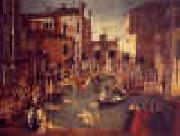 |
Gentile Bellini -- Click Here
|
|
Italian
c1429-1507
Gentile Bellini Gallery
(b Venice, ?1429; d Venice, 23 Feb 1507). Painter and draughtsman, son of (1) Jacopo Bellini. An official painter of the Venetian Republic, he was a dominant figure in Venetian art for several decades in the latter half of the 15th century, known particularly for portraits and large narrative paintings in which the city and its inhabitants are depicted in great detail. |
|
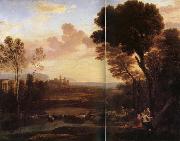 |
Gellee Claude,dit le Lorrain -- Click Here
|
|
French , 1600-1682 |
|
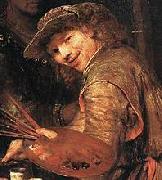 |
GELDER, Aert de -- Click Here
|
|
Dutch Baroque Era Painter, 1645-1727 |
|
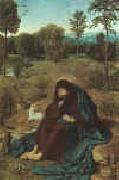 |
Geertgen Tot Sint Jans -- Click Here
|
|
Netherlandish Northern Renaissance Painter, ca.1460-1490
Geertgen tot Sint Jans is also known as Geertgen van Haarlem, Gerrit van Haarlem, or Gerrit Gerritsz.[citation needed] Alternative spellings of his first name are Gheertgen, Geerrit, and Gheerrit, where G(h)eertgen is the diminutive form of G(h)eerrit.
Presumably, he was born in Leiden, then in the Burgundian Netherlands in the Holy Roman Empire, around the year 1465. The assignment of Leiden as his birth place is traceable to a 17th century print by Jacob van Matham. There is no known archival evidence for this claim by Jacob van Matham. The modern acceptance of Leiden as Geertgen's birth place is roughly traceable to Johann Kessler's dissertation of 1930.
Probably, Geertgen was a pupil of Albert van Ouwater, who was one of the first oil painters in the northern Low Countries. Both painters lived in the city of Haarlem. Geertgen was attached to the monastery of the Knights of Saint John, for whom he painted an altarpiece. Although Geertgen was not a member of the Order of Saint John, his last name "tot Sint Jans" was derived from the order's name and means "unto Saint John".
Geertgen died in Haarlem, then the Habsburg Netherlands in the Holy Roman Empire, around the year 1495, when he was approximately 28 years old. He was buried in the monastery of the Knights of Saint John. Modern scholars have attempted to calculate the artist's death date with the information from The Painting-Book (Middle Dutch: Het Schilder-Boeck) by Karel van Mander, published in 1604. There are some archival traces that suggest he may in fact have lived into the 16th century. |
|
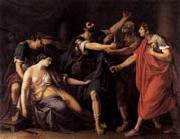 |
Gavin Hamilton -- Click Here
|
|
Scottish Neoclassical Painter, 1723-1798,Scottish painter, archaeologist and dealer, active in Italy. He was educated at Glasgow University and in 1748 arrived in Rome to study portrait painting under Agostino Masucci. He lodged with the architects James Stuart and Nicholas Revett; they probably encouraged him to visit Herculaneum and the recently discovered archaeological site of Pompeii, which had a profound effect on his subsequent career. Convinced that 'the ancients have surpassed the moderns, both in painting and sculpture', Hamilton undertook a systematic study of Classical antiquities during the 1750s and 1760s. In 1751 he was briefly in Scotland, where he painted a full-length portrait of Elizabeth Gunning, Duchess of Hamilton (Lennoxlove, Lothian), in a conventional style derived from van Dyck. He returned to Rome in 1752 and remained there, with the exception of short visits to England, for the rest of his life. In 1755 he was introduced by Anton Raphael Mengs to Johann Joachim Winckelmann, who was to become one of the leading theorists of Neo-classicism. In the same year Hamilton entertained Robert Adam, who studied in Rome from 1755 to 1757. He was to know and encourage almost all the British artists who worked in Rome during the second half of the 18th century. Henry Fuseli, who was not an uncritical admirer, wrote of Hamilton in 1805, |
|
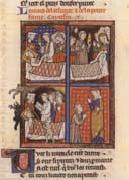 |
Gautier de Coinci -- Click Here
|
|
1177-1236 French,Born of noble stock, Gautier became a Benedictine novice at Saint-M??dard de Soissons in 1193 and prior at Vic-sur-Aisne in 1214, returning to Saint-M??dard to be grand prior (1233) until his death. His single work, preserved in nearly 80 manuscripts, is the massive Miracles de Nostre Dame, written at Vic (1214-27) and occupying some 30, 000 lines in two books. |
|
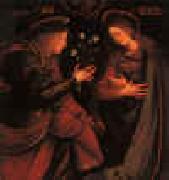 |
Gaudenzio Ferrari -- Click Here
|
|
1741-1546
Italian
Gaudenzio Ferrari Location
Italian painter and sculptor. He probably received his training at Varallo at the beginning of the 1490s, a lively period in the town artistic life, when extensive works were being carried out at the sacromonte. His master was Gian Stefano Scotto ( fl 1508), none of whose works has as yet been identified but who, judging from the early work of his pupil, may have been influenced by Lombard artists. Gaudenzio early works, such as a painting on panel of the Crucifixion (Varallo, Mus. Civ. Pietro Calderini), were influenced by the poetic art of Bramantino and by the northern Italian classicizing style of the Milanese painter Bernardo Zenale. His early, but self-assured, Angel of the Annunciation (c. 1500; Vercelli, Mus. Civ. Borgogna), painted for the Convento delle Grazie, Vercelli, suggests that these sources were soon enriched by his response to the tender Renaissance style of Pietro Perugino (active at the Certosa di Pavia, 1496-9). Gaudenzio is also recorded at Vercelli in the first known documentary reference to him, the contract for a polyptych commissioned by the Confraternit? di Sant Anna in 1508, with Eusebio Ferrari acting as guarantor. There remain four paintings of scenes from the Life of St Anne and God the Father (Turin, Gal. Sabauda) and two of the Annunciation (London, N.G.). In these works Gaudenzio style is more controlled, possibly as a result of a journey to central Italy in c. 1505. |
|
|
|
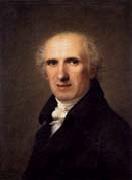 |
Gaspare Landi -- Click Here
|
|
Italian, 1756-1830,was an Italian painter of the Neoclassic period, active in Rome and his native city of Piacenza. He is said to have been a fun-loving younth, but in 1781 he procured a subsidy to study painting in Rome from patron and distant relative, Marquis Giambattista Landi. At age 25, he moved to Rome to work under Domenico Corvi and Pompeo Battoni. He is considered a rival of Vincenzo Camuccini. Two of his pictures were once in the Pinacoteca at Parma, Diomedes and Ulysses bearing off the Palladium (1783) and the Marriage of Abraham and Sarah. Above one of the altars in the church of the Santa Casa at Loreto there is a later work by this Landi showing the Madonna addolorata. A major work is his large canvas representing the fainting of Christ as he struggles along over the road to Calvary weighted down by the burden of the Cross, Lo Spasimo for San Giovanni at Piacenza. It hung opposite Vincenzo Camuccini's Presentation. Landi became a member of the Accademia di San Luca of Rome in 1805, professor of the theory of painting in 1812, and president of the Academy in 1817. He was also made a Chevalier of the Order of the Iron Crown, of the Order of San Giuseppe, and of a Neapolitan order. About 1820 he returned to Piacenza, intending to remain there, but soon tired of the monotonous existence of a provincial town, and in 1824 reestablished himself at Rome. His last work was an Assumption and was placed in the church of San Francesco di Paola, at Naples. He returned to Piacenza in 1829, where he died. |
|
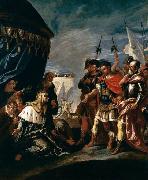 |
Gaspare Diziani -- Click Here
|
|
(1689 - 17 August 1767) was an Italian painter of the late-Baroque or Roccoco period, active mainly in the Veneto but also in Dresden and Munich.
His earliest training was in his native town of Belluno with Antonio Lazzarini, then moved to Venice, to the studio of Gregorio Lazzarini and later that of Sebastiano Ricci. He was seven years older, but otherwise his career was contemporary with the Lazzarini and Ricci fellow-pupil, Giovanni Battista Tiepolo.
Between 1710-1720, he painted a group of eight pictures that included the Mary Magdalene for the church of San Stefano in Belluno, and Entry into Jerusalem for San Teodoro in Venice. He also painted three frescoes on the Life of Saint Helena in the Scuola del Vin next to the church of San Silvestro. Dizianies celerity and technical assurance are evident preparatory oil sketches, with color applied in rapid and spirited strokes.
He was also working as a scenery painter for the theater and opera in Venice, Munich (1717), and later in Dresden, working with Alessandro Mauro. Diziani was invited to Rome by Cardinal Ottoboni in 1726, to paint a emagnificent decoration for the church of San Lorenzo in Damaso. The decoration is now known only through an engraving by Claude Vasconi.
The Sala dei Pastelli in Ca' Rezzonico has an sotto in su allegorical ceiling fresco presenting Triumph of Poetry (Poetry surrounded by Painting, Architecture, Music and Sculpture).
|
|
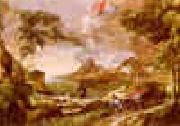 |
Gaspard Dughet -- Click Here
|
|
1615-1675
French Gaspard Dughet Location
Italian painter. He was one of the most distinguished landscape painters working in Rome in the 17th century, painting decorative frescoes and many easel paintings for such major Roman patrons as Pope Innocent X and the Colonna family. He is associated with a new genre of landscape, the storm scene, although of some 400 catalogued works little more than 30 treat this theme. His most characteristic works depict the beauty of the scenery around Rome, particularly near Tivoli, and suggest the shifting patterns of light and shade across a rugged terrain. Dughet drew from nature, yet his landscapes are carefully structured, and figures in antique dress suggest the ancient beauty of a landscape celebrated by Virgil. Very few can be securely dated; his development may be inferred from his few dated fresco paintings and from the wider context in which he was working. Most writers, following Pascoli, have divided Dughet career into three periods. His first landscapes were a little dry (Pascoli); in his second period he developed a more learned style, closer to that of his teacher, Nicolas Poussin; his late works were more intimate and more original.
|
|
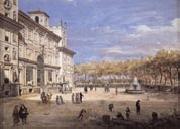 |
Gaspar Van Wittel -- Click Here
|
|
Dutch Baroque Era Painter, ca.1653-1736
was a Dutch landscape painter. Van Wittel learned painting in his hometown of Amersfoort. His first extant works were made in Hoorn in 1672, but he relocated to Rome with his family ca. 1675 and made his career there. In Amersfoort, he likely was exposed to Dutch landscape artists such as Jan van der Heyden and Gerrit Berckheyde. He married in Rome in 1697, and stayed most of his life in that city, though, between 1694 and 1710, he toured Italy and painted in places like Florence, Bologna, Ferrara, Venice, Milan, Piacenza and Naples. He is one of the principal painters of topographical views known as vedute. His son Luigi would become a famous architect and also carries the italianized family name of Vanvitelli. In Luigi's biography is written that his father was born in July 1656, |
|
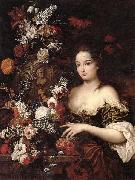 |
Gaspar Peeter Verbrugghen the younger -- Click Here
|
|
Flemish ,
Antwerp 1664-1730
|
|
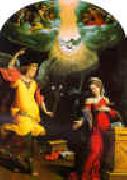 |
Garofalo -- Click Here
|
|
1481-1559
Italian
Garofalo Gallery
Italian painter. Active mainly in Ferrara and the district around the Po delta, he was one of the most outstanding figures in Emilian classicism during the first half of the 16th century. In 1497 Garofalo father paid Boccaccio Boccaccino to teach his son the rudiments of painting. Garofalo first works were directly influenced by the Cremonese painter, to whom they were formerly even attributed. They consist of a series of small paintings depicting the Virgin and Child. The example in the Ca d Oro in Venice must have been Garofalo first painting and reveals not only the lessons learned from Boccaccino, but also signs of the influence of Domenico Panetti (c. 1460-before 1513), traditionally recorded as his first master. Another Virgin and Child (Assisi, Perkins priv. col.) shows signs of the early influence of Lorenzo Costa the elder, while the example in the Nationalmuseum, Copenhagen, shows a similarity with the early works of his contemporary, Lodovico Mazzolino. A particularly important project in Ferrara during the earliest years of the 16th century, involving numerous highly skilled artists, was the fresco decoration of the oratory of the Concezione. The frescoes (Ferrara, Pin. N.) represent a significant development in the city art. Garofalo hand has been identified in the Presentation in the Temple, in which he reveals a familiarity not only with local art, but also with the high points of Bolognese classicism, whose greatest exponents were Francesco Francia and Lorenzo Costa the elder. Around 1505, Garofalo works show a close familiarity with artistic developments in Bologna, in particular the mature style of Costa and the decoration in 1505-6, by Francesco Francia, Costa, Aspertini and others, of the oratory of S Cecilia in S Giacomo Maggiore. Garofalo Virgin Enthroned between SS Martin and Rosalia (Florence, Uffizi), created for Codigoro Cathedral, should be seen within this context, whereas the small altarpiece for the Arcivescovado, Ferrara, although executed at the same time, shows early, if faint, signs of the influence of Venetian painting of the period. |
|
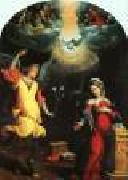 |
GAROFALO -- Click Here
|
|
Italian Painter, ca.1481-1559 |
|
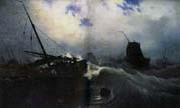 |
Garneray Ambroise -- Click Here
|
|
French Artist ,
Paris 1783-1857
French corsair, painter and writer. He served under Robert Surcouf and Jean-Marie Dutertre, and was held prisoner by the British for eight years. Garneray was born in Paris (on Rue Saint-Andre-des-arts, in the Latin Quarter) on February 9, 1783. He was the elder son of Jean-Francois Garneray (1755 - 1837), painter of the king, who was pupil of Jacques-Louis David. At thirteen, he joined the Navy as a seaman, encouraged by his cousin, Beaulieu-Leloup, commander of the frigate Forte ("the Stout one"). Garneray sailed from Rochefort to the Indian Ocean with the frigate division under Sercey, to which the Forte belonged. Garneray took part in the various campaigns of Sercey division and witnessed the hardship it met in the battle against Arrogant and Victorious. He then served in 1798 on the corvette Brule Gueule ("Mouth burner"), which patrolled with the frigate Preneuse ("the Taker"). Returning from this campaign, the Brule Gueule and Preneuse were chased by a British squadron comprising two ships of the line, one frigate and one corvette; the French flew into a creek near Black River whose shallow waters prevented the British from pursuing. The next day, the British squadron attacked; the French had established strong defensive positions by installing the unusable batteries of their ships ashore, and repelled the British squadron. In 1799, |
|
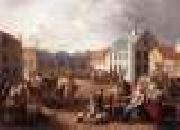 |
GAREMIJN, Jan Antoon -- Click Here
|
|
Flemish Baroque Era Painter, 1599-1641 |
|
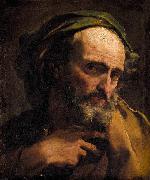 |
Gandolfi,Gaetano -- Click Here
|
|
Gaetano Gandolfi (31 August 1734 - 20 June 1802) was an Italian painter of the late Baroque and early Neoclassic period, active in Bologna.
Gaetano was born in San Matteo della Decima, near Bologna, to a family of artists. Ubaldo Gandolfi was his brother, Mauro Gandolfi was his son, and Democrito Gandolfi was his grandson. Gaetano became a "student" at the Accademia Clementina in Bologna, where he was taught by Felice Torelli and Ercole Lelli. In the academy, he was the recipient of several prizes for both figure drawing and sculpture. Later, in an autobiography, Gaetano claimed Felice Torelli (1667-1748) as his master. Other sources mention Ercole Graziani the Younger (1688-1765) and Ercole Lelli. He traveled to England, and became strongly influenced by Tiepolo. Gaetano died in Bologna, Italy.
|
|
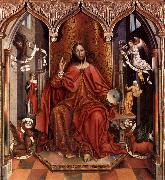 |
Gallego,Fernando -- Click Here
|
|
Fernando Gallego (c. 1440 - 1507) was a Spanish painter, brought up in an age of gothic style, his art is generally regarded as Hispano-Flemish style. It's thought that he was born in Salamanca, Spain, and his first known works were in the cathedrals of Plasencia and Coria, in Ceeres (Spain). His most famous known works are:
The Retablo of San Ildefonso, in the Cathedral of Zamora, Spain
The Sky of Salamanca, in the University of Salamanca, Spain
The Retablo of Ciudad Rodrigo, now at the University of Arizona, Arizona, USA
The Arcenillas' panels, placed in Zamora, Spain
San Acacio and the 10,000 Martyrs, at the Meadows Museum, Dallas, Texas, USA
The last time that he was named in a document is in 1507, but the date of his death is unknown.
|
|
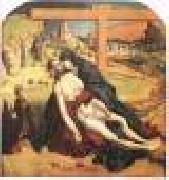 |
GALLEGO, Fernando -- Click Here
|
|
Spanish Early Renaissance Painter, ca.1440-1507 |
|
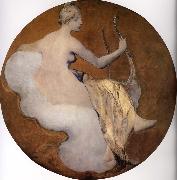 |
Galland Pierre Victor -- Click Here
|
|
Geneve 1822-Paris 1892
He studied metalwork with his father Jacques Galland, an accomplished goldsmith, until age 16. He then entered the studio of Henri Labrouste to study architecture. After two years of training, Labrouste encouraged him to pursue his interest in decorative painting under the direction of Michel-Martin Drolling. In 1843 the decorative painter Pierre-Luc-Charles Ciceri (1782-1868) hired Galland to assist with the painting of figures, flowers, garlands and fruit. He worked again with Labrouste, in 1848, on the decoration of the national festival, the F?te de la Concorde. |
|
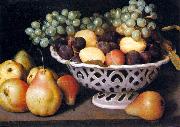 |
Galizia,Fede -- Click Here
|
|
Fede Galizia (1578 - 1630) was an Italian Renaissance painter, a pioneer of the still life genre.
|
|
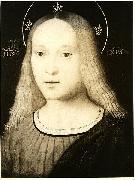 |
Galeazzo Campi -- Click Here
|
|
(1475/1477 - 1536) was an Italian painter of the Renaissance from Cremona. He was a pupil of Boccaccio Boccaccinis . His representation was rather rigid, but careful. His landscapes show influences of Perugino and Giovanni Bellini.
Campi was the head of an artist family, existing in the middle and end of 16th Century who lived in Cremona and left numerous works of art. His three sons, Giulio Campi, Antonio Campi and Vincenzo Campi are historically noteworthy.
|
|
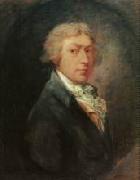 |
GAINSBOROUGH, Thomas -- Click Here
|
|
English Rococo Era/Romantic Painter, 1727-1788
English painter, draughtsman and printmaker. He was the contemporary and rival of Joshua Reynolds, who honoured him on 10 December 1788 with a valedictory Discourse (pubd London, 1789), in which he stated: 'If ever this nation should produce genius sufficient to acquire to us the honourable distinction of an English School, the name of Gainsborough will be transmitted to posterity, in the history of Art, among the very first of that rising name.' He went on to consider Gainsborough's portraits, landscapes and fancy pictures within the Old Master tradition, against which, in his view, modern painting had always to match itself. Reynolds was acknowledging a general opinion that Gainsborough was one of the most significant painters of their generation. Less ambitious than Reynolds in his portraits, he nevertheless painted with elegance and virtuosity. He founded his landscape manner largely on the study of northern European artists and developed a very beautiful and often poignant imagery of the British countryside. By the mid-1760s he was making formal allusions to a wide range of previous art, from Rubens and Watteau to, eventually, Claude and Titian. He was as various in his drawings and was among the first to take up the new printmaking techniques of aquatint and soft-ground etching. Because his friend, the musician and painter William Jackson (1730-1803), claimed that Gainsborough detested reading, there has been a tendency to deny him any literacy. He was, nevertheless, as his surviving letters show, verbally adept, extremely witty and highly cultured. He loved music and performed well. He was a person of rapidly changing moods, humorous, brilliant and witty. At the time of his death he was expanding the range of his art, having lived through one of the more complex and creative phases in the history of British painting. He painted with unmatched skill and bravura; while giving the impression of a kind of holy innocence, he was among the most artistically learned and sophisticated painters of his generation. It has been usual to consider his career in terms of the rivalry with Reynolds that was acknowledged by their contemporaries; while Reynolds maintained an intellectual and academic ideal of art, Gainsborough grounded his imagery on contemporary life, maintaining an aesthetic outlook previously given its most powerful expression by William Hogarth. |
|
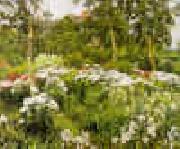 |
Gaines Ruger Donoho -- Click Here
|
|
1857-1916
Gaines Ruger Donoho Gallery |
|
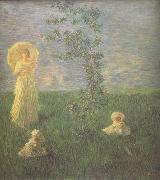 |
Gaetano previati -- Click Here
|
|
Italian Painter, 1852-1920
Italian painter and writer. He was one of the leading exponents of Divisionism, particularly skilled at large-scale decorative schemes, and especially important for his writings on technique and theory. |
|
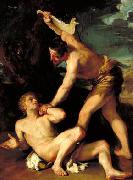 |
Gaetano Gandolfi -- Click Here
|
|
(August 31, 1734 - June 20, 1802) was an Italian painter of the late Baroque and early Neoclassic period, active in Bologna.
Gaetano was born in San Matteo della Decima, near Bologna, to a family of artists. Ubaldo Gandolfi was his brother, Mauro Gandolfi was his son, and Democrito Gandolfi was his grandson. Gaetano became a "student" at the Accademia Clementina in Bologna, where he was taught by Felice Torelli and Ercole Lelli. In the academy, he was the recipient of several prizes for both figure drawing and sculpture. Later, in an autobiography, Gaetano claimed Felice Torelli (1667 - 1748) as his master. Other sources mention Ercole Graziani the Younger (1688 - 1765) and Ercole Lelli. He traveled to England, and became strongly influenced by Tiepolo. Gaetano died in Bologna, Italy.
|
|
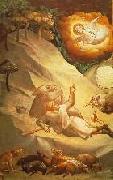 |
GADDI, Taddeo -- Click Here
|
|
Italian Early Renaissance Painter, ca.1300-1366
Italian painter active in Florence. He was the son of a painter and mosaicist and a student of Giotto. His best-known works are frescoes in the church of Santa Croce in Florence. He directed a flourishing workshop for three decades, producing pictures in the style of Giotto but featuring more vivid picturesque effects with narrative detail. His son and pupil Agnolo (c. 1350 C 96) was an influential and prolific artist who likewise produced a notable series of frescoes for Santa Croce, The Legend of the True Cross |
|
 |
GADDI, Agnolo -- Click Here
|
|
Italian Early Renaissance Painter, ca.1345-1396 |
|
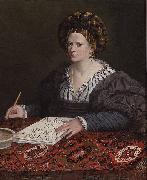 |
Gabriele Capellini -- Click Here
|
|
Gabriele Capellini was an Italian painter of the Renaissance.He was also called il Caligarino or il Calzolaretto (the little shoemaker), from his having first pursued that trade. He born in Ferrara, and there trained under Dosso Dossi, he was active c. 1520. For the church of San Francesco at Ferrara St. Peter and St. James and for San Giovannino the principal altar-piece, representing The Virgin and Infant with several Saints.
|
|
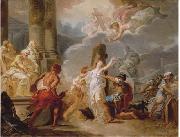 |
Gabriel-Francois Doyen -- Click Here
|
|
(1726 - 5 June 1806) was a French painter, who was born at Paris.
His passion for art prevailed over his father's wish, and he became in his twelfth year a pupil of Charles-Andra van Loo. Making rapid progress, he obtained at twenty the Grand Prix, and in 1748 set out for Rome. He studied the works of Annibale Carracci, Pietro Berrettini da Cortona, Giulio Romano and Michelangelo, then visited Naples, Venice, Bologna and other Italian cities, and in 1755 returned to Paris. At first unappreciated and disparaged, he resolved by one grand effort to achieve a reputation, and in 1758 he exhibited his Death of Virginia. It was completely successful, and procured him admission to the Acad??mie Royale de Peinture et de Sculpture. Among his greatest works are reckoned the Miracle des Ardents, painted for the church of St Genevieve at St Roch (1767)this painting was exhibited in the salon of 1767 which was recorded by Saint-Aubin in "View of the salon of 1767"; the Triumph of Thetis, for the chapel of the Invalides; and the Death of St Louis, for the chapel of the Military School. In 1776 he was appointed professor at the Academy. Soon after the beginning of the French Revolution he accepted the invitation of Catherine II of Russia. and settled at St Petersburg, where he was loaded with honors and rewards. He died there on 5 June 1806.
|
|
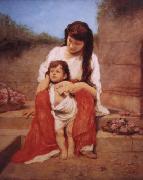 |
Gabriel von Max -- Click Here
|
|
(August 23, 1840 - November 24, 1915) was a Prague-born Austrian painter.
He was born Gabriel Cornelius Max, the son of Czech sculptor Joseph Max and Anna Schumann. He studied between 1855 and 1858 at the Prague Academy of Arts with Eduard von Engerth. His studies included parapsychology (somnambulism, hypnotism, spiritism), Darwinism, Asiatic philosophy, the ideas of Schopenhauer, and various mystical traditions. The spiritual-mystical movement was emphasized by the writings of Carl du Prel, and the Munich painter Albert Keller was also an influence.
His first large canvas was painted in 1858 while he was a student at the Prague Academy. He continued his studies at the Viennese Academy of Art with Karl von Blaas, Karl Mayer, Christian Ruben and Carl Wurzinger. From 1863 to 1867 he studied at the Munich Academy with Karl Theodor von Piloty, and also Hans Makart and Franz Defregger. His first critical success was in 1867 with the painting "Martyr at the Cross": that painting transformed the "Ungl?-ksmalerei" (dark palette) of Piloty into a religious-mystical symbolism using a psychological rendering of its subject.
He continued to use the dark palette of the Piloty school well into the 1870s, later moving toward a more muted palette, using fewer,clearer colors. From 1869, Gabriel von Max had his studio in Munich; in the summer, he was in the Ammerland at Starnberger Lake. From 1879-1883, Gabriel Max was a professor of Historical Painting at the Munich Academy; he also became a Fellow of The Theosophical Society. In 1900 he was ennobled and became a Ritter. He died in Munich in 1915.
His interest in anthropological studies also showed in his work. He owned a large scientific collection of prehistoric ethnological and anthropological finds: the collection now resides in the Stadtischen Reiss Museum in Mannheim. At his residence in Starnberger Lake, Gabriel Max surrounded himself with a family of monkeys, which he painted often, sometimes portraying them as human. Max, along with his colleagues, often used photographs to guide painting. The great number of monkey photographs in his archive testify to their use as direct translation into his paintings. In 1908, his painting "The Lion's Bride" became celebrated, and was depicted in motion pictures as an hommage in the Gloria Swanson film, Male and Female, (1919), directed by Cecil B. de Mille.
Gabriel von Max was a significant artist to emerge from the Piloty School, because he abandoned the themes of the Grunderzeitliche (genre and history), in order to develop an allegorical-mystical pictorial language, which became typical of Secessionist Art. Characteristic of the ethereal style of Gabriel Max is "The Last Token" (in the Metropolitan Museum), and "Light" (in the Odessa Museum of Western and Eastern Art, Ukraine).
|
|
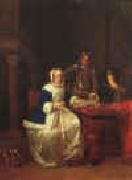 |
Gabriel Metsu -- Click Here
|
|
1629-1667
Dutch
Gabriel Metsu Galleries
One of his earliest pictures is the "Lazarus" at the Strassburg Museum, painted under the influence of Jan Steen. In 1653 under the influence of Rembrandt he painted "Woman taken in Adultery," a large picture which is now in the Louvre. To the same period belong the "Departure of Hagar," formerly in the Thore collection, and the "Widow's Mite" at the Schwerin Gallery. But he probably observed that sacred art was ill suited to his temper, or he found the field too strongly occupied, and turned to other subjects for which he was better fitted. That at one time he was deeply impressed by the vivacity and bold technique of Frans Hals can be gathered from Lord Lonsdale's picture of "Women at a Fishmonger's Shop."
What Metsu undertook and carried out from the first with surprising success was the low life of the market and tavern, contrasted, with wonderful versatility, by incidents of high life and the drawing-room. In no single instance do the artistic lessons of Rembrandt appear to have been lost upon him. The same principles of light and shade which had marked his schoolwork in the "Woman taken in Adultery" were applied to subjects of quite a different kind. A group in a drawing-room, a series of groups in the market-place, or a single figure in the gloom of a tavern or parlour, was treated with the utmost felicity by fit concentration and gradation of light, a warm flush of tone pervading every part, and, with that, the study of texture in stuffs was carried as far as it had been by Ter Borch or Gerard Dou, if not with the finish or the brio of De Hooch.
One of the best pictures of Metsu's manhood is the "Market-place of Amsterdam," at the Louvre, respecting which it is difficult to distribute praise in fair proportions, so excellent are the various parts, the characteristic movement and action of the dramatis personae, the selection of faces, the expression and the gesture, and the texture of the things depicted. Equally fine, though earlier, are the "Sportsman" (dated 1661) and the "Tavern" (also 1661) at the Hague and Dresden Museums, and the "Game-Dealer's Shop," also at Dresden, with the painter's signature and 1662.
Gabriel Metsu, Man Writing a Letter (1662-1665), Oil on canvas, National Gallery of Ireland, DublinAmong the five examples of the painter in the Wallace Collection, are "The Tabby Cat," and "The Sleeping Sportsman," which cost Lord Hertford £ 3000, is an admirable example technically considered. Among his finest representations of home life are the "Repast" at the Hermitage in St Petersburg; the "Mother nursing her Sick Child" in the Rijksmuseum in Amsterdam; the "Amateur Musicians" at the Hague Gallery; the "Duet" and the "Music Lesson" at the National Gallery, London, and many more examples at nearly all the leading European galleries. Five of his painting are in Dresden, collected by August the Strong. |
|
 |
Gabriel Metsu -- Click Here
|
|
Gabriël Metsu
Gabriël Metsu (January 1629 - buried 24 October 1667) was a Dutch painter of history paintings, genre works and portraits.
Metsu was the son of the Flemish painter Jacques Metsu (c.1588-1629), who lived most of his days at Leiden, and Jacomijntje Garniers, his third wife, whom he married in 1625. Jacomijntje was the widow of a painter with three children of her own. Two months after Gabriël's birth, his father died.
According to Jacobus Houbraken, Metsu was taught by Gerard Dou, though his early works do not lend colour to this assertion. He was influenced by painters of Leiden such as Jan Steen, and later by Frans van Mieris the Elder.
Metsu was registered among the first members of the painters' corporation at Leiden; and the books of the guild also tell us that he remained a member in 1649. In Leiden, it was alleged that Metsu left a brothel at six in the morning and took a prostitute to the Academy. In 1650 he ceased to subscribe, and works bearing his name and the date of 1653 support the belief that he had moved. Metsu was trained in Utrecht by Jan Baptist Weenix and Nicolaus Knepfer.
In Amsterdam Metsu lived in an alley on Prinsengracht, where he kept chickens. He got into an argument with a neighbor and moved to a house on the canal side, where a daily vegetable market was held. In 1658 he married Isabella de Wolff, whose father was a potter and mother a painter. The Speed Art Museum has a portrait of the couple. Pieter de Grebber, a religious painter from Haarlem, was her uncle.
At the onset of the 1660s Metsu turned for inspiration to the art of the "fijnschilders" from his native Leiden. Metsu was responding to the market of Dou's paintings, who sold his paintings all over for exorbitant prices. Metsu may have also influenced Pieter de Hoogh. Around the year 1661, Metsu won the patronage of the Amsterdam cloth merchant Jan J. Hinlopen and painted his family more than once in a fashionable surrounding.
The Poultry-Seller, 1662
At least thirteen of paintings show carpets and he probably used the same model. He included several fine examples of minutely depicted floral and cloudband carpets in his works and even a silk Oriental rug, as well as so-called "Lotto" rugs which he for some reason, in contrast to his meticulous rendering of the floral carpets, depicted only in a very sketchy fashion. After Metsu died, his widow left for Enkhuizen, to live with her mother. |
|
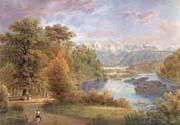 |
Gabriel Lory Pere -- Click Here
|
|
Bern 1763-1840 Bern |
|
|
|
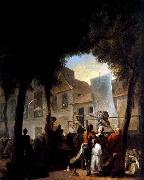 |
Gabriel Jacques de Saint-Aubin -- Click Here
|
|
French Painter, 1724-1780,Draughtsman, etcher and painter, brother of (1) Charles-Germain de Saint-Aubin. He studied with the painters Etienne Jeaurat and Hyacinthe Colin de Vermont, but failed three times to win the Prix de Rome (competition paintings, 1752-4; Paris, Louvre). He broke with the Academie Royale, preferring to support and exhibit at the Academie de St Luc. Although he continued to paint such pictures as a Street Show in Paris (c. 1760; London, N.G.; other examples in Rouen, Mus. B.-A.), he is best known as a draughtsman and etcher. He was a passionate and unconventional observer of the sights of the Paris streets and of the social scene. Dacier saw him as the 'man who drew at all times and in all places', and his contemporary Jean-Baptiste Greuze spoke of his 'priapism of draughtsmanship'. In his many drawings he combined pencil, black and red chalk, bistre, ink and watercolour to create dazzling spontaneous effects. He drew incidents that struck him as he wandered the streets, or entertainments that he attended. He recorded them, noting dates and times, in sketchbooks (e.g. Paris, Louvre and Stockholm, Nmus.) or sometimes in the margins and blank pages of printed books that he was carrying (such as a volume of the poems of Jean-Michel Sedaine, in the Mus. Cond?, Chantilly). These drawings of contemporary incidents include the Fire at the Foire Saint-Germain on the Night of 16-17 May 1762 (ex-David Weill priv. col.) and the Crowning of Voltaire at the Theetre-Franeais in 1778 (Paris, Louvre; see fig.). He went regularly to the Salon of the Academie Royale and to art sales, covering the margins and flyleaves of his sale catalogues and Salon livrets with tiny sketches of works of art and the passing scene. One hundred of these illustrated catalogues were among his effects when he died, and of these about a third survive. These include the livrets for the Salons of 1761, 1769 and 1777 (all Paris, Bib. N.), as well as the catalogues of the sales of Louis-Michel van Loo in 1772 and Charles Natoire in 1778 (both Paris, Bib. N.), and that of Pierre-Jean Mariette in 1775 (Boston, MA, Mus. F.A.). Together with his etchings and large watercolours (e.g. Paris, Louvre) of the Louvre's Salon Carre at the time of the exhibitions of 1753, 1767 and 1769, |
|
|
|
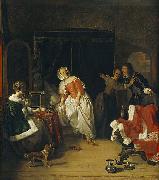 |
Gabrie Metsu -- Click Here
|
|
Gabriël Metsu (January 1629 - buried 24 October 1667) was a Dutch painter of history paintings, genre works and portraits.
Metsu was the son of the Flemish painter Jacques Metsu (c.1588-1629), who lived most of his days at Leiden, and Jacomijntje Garniers, his third wife, whom he married in 1625. Jacomijntje was the widow of a painter with three children of her own. Two months after Gabriël's birth, his father died.
According to Jacobus Houbraken, Metsu was taught by Gerard Dou, though his early works do not lend colour to this assertion. He was influenced by painters of Leiden such as Jan Steen, and later by Frans van Mieris the Elder.
Metsu was registered among the first members of the painters' corporation at Leiden; and the books of the guild also tell us that he remained a member in 1649. In Leiden, it was alleged that Metsu left a brothel at six in the morning and took a prostitute to the Academy. In 1650 he ceased to subscribe, and works bearing his name and the date of 1653 support the belief that he had moved. Metsu was trained in Utrecht by Jan Baptist Weenix and Nicolaus Knepfer.
The alley on Prinsengracht
In Amsterdam Metsu lived in an alley on Prinsengracht, where he kept chickens. He got into an argument with a neighbor and moved to a house on the canal side, where a daily vegetable market was held. In 1658 he married Isabella de Wolff, whose father was a potter and mother a painter. The Speed Art Museum has a portrait of the couple. Pieter de Grebber, a religious painter from Haarlem, was her uncle.
|
|
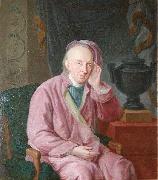 |
G. Fuchs -- Click Here
|
|
painted Bolle Willum Luxdorph in 1782(1782)
|
|
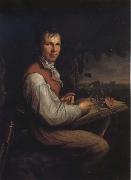 |
Friedrich Georg Weitsch -- Click Here
|
|
1758 Braunschweig-1828 Berlin |
|
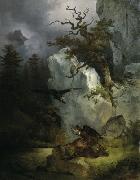 |
Friedrich Gauermann -- Click Here
|
|
(September 10, 1807 - July 7, 1862), Austrian painter, son of the landscape painter Jacob Gauermann (1773 - 1843), was born at Miesenbach near Gutenstein in Lower Austria.
It was the intention of his father that he should devote himself to agriculture, but the example of an elder brother, who, however, died early, fostered his inclination towards art. Under his father's direction he began studies in landscape, and he also diligently copied the works of the chief masters in animal painting which were contained in the academy and court library of Vienna. In the summer he made art tours in the districts of Styria, Tirol, and Salzburg.
Two animal pieces which he exhibited at the Vienna Exhibition of 1824 were regarded as remarkable productions for his years, and led to his receiving commissions in 1825 and 1826 from Prince Metternich and Caraman, the French ambassador. His reputation was greatly increased by his picture "The Storm," exhibited in 1829, and from that time his works were much sought after and obtained correspondingly high prices. His "Field Labourer" was regarded by many as the most noteworthy picture in the Vienna exhibition of 1834, and his numerous animal pieces have entitled him to a place in the first rank of painters of that class of subjects.
The peculiarity of his pictures is the representation of human and animal figures in connexion with appropriate landscapes and in characteristic situations so as to manifest nature as a living whole, and he particularly excels in depicting the free life of animals in wild mountain scenery. Along with great mastery of the technicalities of his art, his works exhibit patient and keen observation, free and correct handling of details, and bold and clear colouring. He died at Vienna on the 7th of July 1862.
Many of his pictures have been engraved, and after his death a selection of fifty-three of his works was prepared for this purpose by the Austrian Kunstverein (Art Union).
|
|
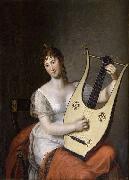 |
Friedrich Carl Groger -- Click Here
|
|
(14 October 1766, Plön - 9 November 1838, Hamburg) was a north-German portrait painter and lithographer. One of the most respected portraitists of his time in northern Germany, his works are to be found in several museums, including the Hamburger Kunsthalle, as well as in north German, Holstein and Danish private collections.
Gröger was the son of a tailor in Plön, where he grew up in modest circumstances. His parents wanted him to become a tailor or wood turner and opposed his early artistic activities. He was largely self taught in painting, though he had some contact in Lebeck with Tischbein and in 1785 was in the city of Lebeck, where he met Heinrich Jacob Aldenrath, his first, loyalest and lifelong friend - the Grögersweg in Hamburg-Barmbek named after him links the Tischbeinstraße with the Aldenrathsweg.
From 1789 he studied at Berlin's Akademie der Kenste. He and Aldenrath then went together to Hamburg, then on a joint study trip to Dresden and Paris, then back to Lebeck, where he worked until 1807. They then alternated between Hamburg, Copenhagen, Kiel and Lebeck, before finally settling in Hamburg in 1814. In 1792 Gröger was made an honorary member of the Gesellschaft zur Beförderung gemeinnetziger Tätigkeit in Lebeck.
Gröger developed from a miniature painter into a portrait painter, who towards the end of his life preferred three quarter bust portraits. Aldenrath took over the miniature painting side of their joint business. After lithography developed in northern Germany, they both worked in this medium individually as well as jointly under the business name Firma Gröger & Aldenrath.
|
|
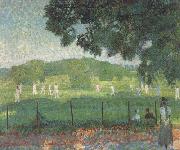 |
Frederick spencer gore -- Click Here
|
|
British. 1878 - 1914.
English painter. He studied at the Slade School of Fine Art, London (1896-9), where he met Harold Gilman, who became a close friend. In 1902 he visited Spain with another Slade contemporary, Wyndham Lewis, and two years later he visited Sickert in Dieppe. From that time on his work was influenced by French art, and Gore learnt much about Degas's paintings through Sickert's teaching. After Sickert's return to London in 1905 Gore frequently accompanied him to music halls and made them the subject of several paintings, for example The Mad Pierrot Ballet, the Alhambra |
|
|